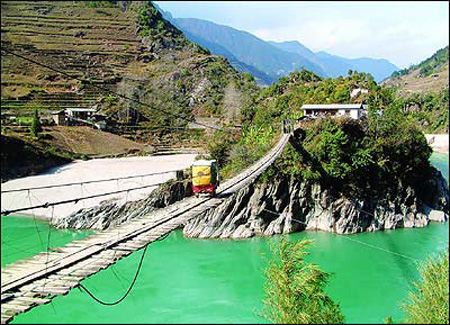Tibet's two scenic spots upgraded as national tourist zones
|
|
|
A legend has it that Mt. Nyainqentanglha and the Namtso Lake are lovers in Tibet's history. Melt snow from the mountain flows into the lake while the lake reflects the mountain. [Xinhua Photo] |
Tibet's two scenic spots, namely, Mt. Nyainqentanglha-Lake Namtso and Mt. Tanggula-Nujiang River, have been designated as a member of the seventh group of national tourist zones recently.
Crossing lhasa's Damxung County and Nagqu Prefecture's Pangkog County, the Mt. Nyainqentanglha-Lake Namtso tourist attraction features Tibetan folklores with glaciers, snowy peaks and plateau lakes.
Boasting complete distinct geographic structures and typical plateau climate, the area is also the home to many rare species of fauna and flora.
|
|
|
Featuring deep valleys and torrential currents, the Nujiang Canyon is considered ideal for drift exploration. [File Photo] |
Forming as the crust sank two million years ago, the Namtso Lake lay at a much lower altitude above sea level in early ages. Resulting from the rise of the crust, less rainfall and more evaporation, the lake rose to the current elevation with its surface area exceeding 1,000 sq km. Now, it is Tibet's largest inland lake and China's second largest salty lake after the Qinghai Lake.
Covering an area of 5,900 sq km, the Mt. Tanggula-Nujiang River scenic zone is considered ideal for drift exploration. As a virgin soil with spectacular natural views, both sides of the Nujiang Canyon are famous for lofty mountains towering more than 3,000 m, deep valleys and torrential currents.
 0 Comments
0 Comments









Go to ForumComments